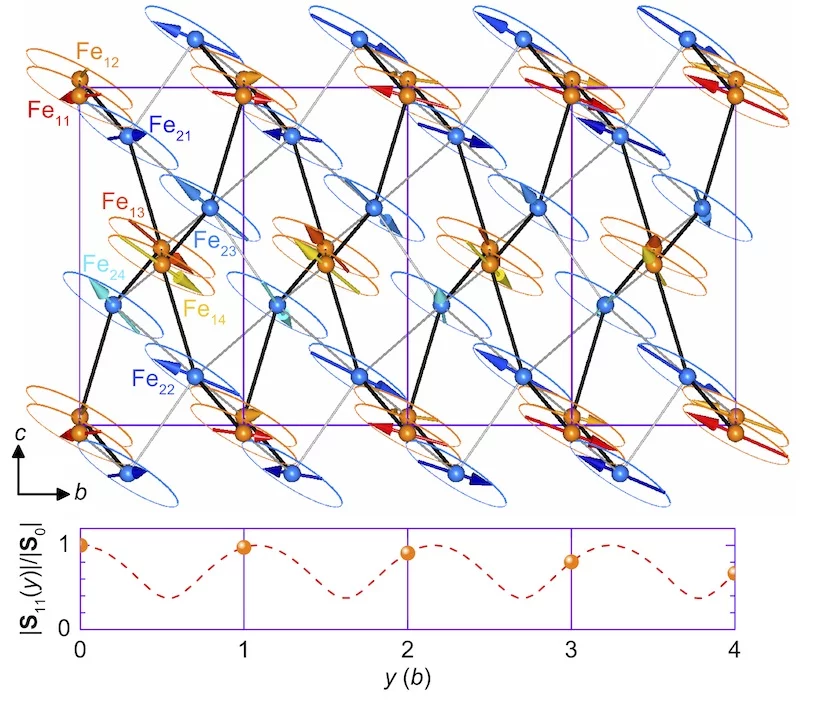In geometrically and/or exchange frustrated materials spin fluctuations may endure down to lowest accessible temperatures - the phenomenon known as persistent spin dynamics. Since spin fluctuations hinder the onset of extended static correlations, persistent spin dynamics and long-range magnetic order are generally considered as mutually exclusive. Remarkably, their coexistence has been found in several frustrated magnetic systems but was lacking a suitable explanation.
Our work reports on a combined study of spherical neutron polarimetry and neutron diffraction, which reveal that in the frustrated coupled-spin-chain system FeTe2O5Br the incommensurate amplitude modulated magnetic structure persists to the lowest accessible temperatures (T/TN ~ 1/200). This is consistent with muon spin relaxation and specific-heat measurements, which in addition to static long-range order signify the presence of persistent spin dynamics. Our study, therefore, suggests that their coexistence is intrinsic to amplitude modulated magnetic structures and thus offers a well-defined framework and a coherent explanation for the coexistence of long-range order and persistent spin dynamics.
Our work reports on a combined study of spherical neutron polarimetry and neutron diffraction, which reveal that in the frustrated coupled-spin-chain system FeTe2O5Br the incommensurate amplitude modulated magnetic structure persists to the lowest accessible temperatures (T/TN ~ 1/200). This is consistent with muon spin relaxation and specific-heat measurements, which in addition to static long-range order signify the presence of persistent spin dynamics. Our study, therefore, suggests that their coexistence is intrinsic to amplitude modulated magnetic structures and thus offers a well-defined framework and a coherent explanation for the coexistence of long-range order and persistent spin dynamics.


